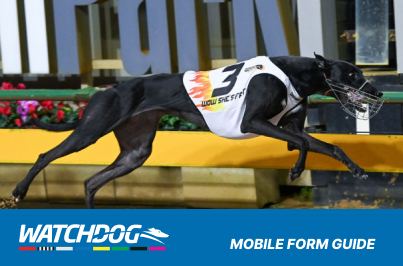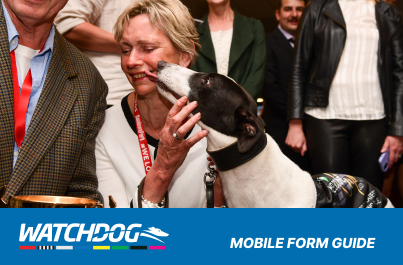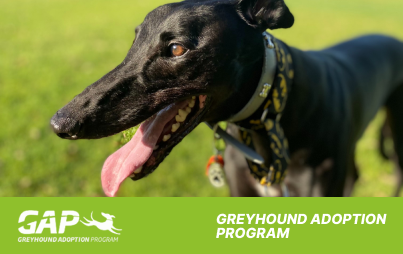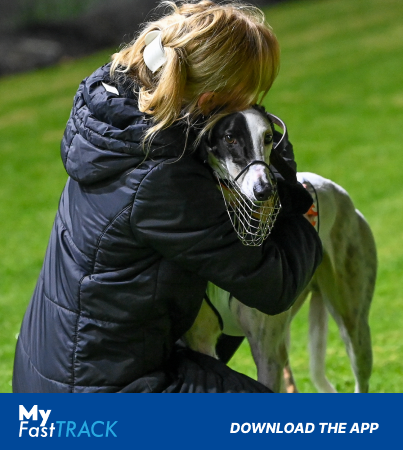George Schofield

Years involved in industry: 85
Category : Pioneer
Notable achievements:
GOTBA Executive (32 years)
Greyhound Racing Control Board (now known as GRV) Member (16 years)
Melbourne Greyhound Racing Association Director (eight years)
Ballarat GRC Committee (10 years)
Ken Carr Medallist (2006)
OAM in 2009 for services to Greyhound Racing (2009)
GRV Hall of Fame inductee (2009)
Australian Greyhound Racing Association (AGRA) Hall of Fame inductee (2015)
George Schofield was the only surviving ‘Pioneer’ to be inducted into Victorian greyhound racing’s Hall of Fame.
Quite remarkably, the then 91-year-old continued to contribute to the sport through his work as a canine chiropractor up until he was 97. He passed away in October 2017, aged 99.
Working from a shed on his property located 30 minutes north of Melbourne in Yuroke, Schofield’s talents weren’t limited to the greyhound industry. People would drive for miles to have George run his healing hands over their injured domestic pets. “I love to see [injured] dogs get better, especially little paralysed ones. When I see a dog that can’t move, and then watch it get up and walk away it is better than all the money in the world”, George said when inducted into GRV’s Hall of Fame in 2009.
Schofield had been applying his chiropractic skills for over 50 years. He worked six days a week from 10am – 4.40pm, having Tuesdays off to “tidy things up around the place”, and even in his later years it was not uncommon to have to queue in line for up to an hour for his services. “I’ve checked all different types of animals. It’s something that comes naturally to me. At first I didn’t charge people. Then I went from charging nothing to charging a silver coin, then from a silver coin to one dollar and then from one dollar to 10 dollars”, he said.
Schofield’s contribution to greyhound racing stems far wider than his chiropractic brilliance. However, he has been involved in virtually every aspect of the sport, including spending a combined total of 56 years as an administrator, 32 of which were as the Executive of the Greyhound Owners, Trainers & Breeders Association [GOTBA]. “Some wild men had greyhounds when I first got into the sport. I always wanted to get into the administration side of things for the betterment of greyhound racing”, said Schofield.
Schofield fought long and hard for the benefit of Victorian owners, trainers and breeders in an era in which the industry of today would struggle to comprehend. Schofield’s son-in-law Dr. John Stephens, former CEO of Greyhound Racing Victoria, explained that administering greyhound racing was particularly tough in George’s era. “The administrators of yesteryear paved the way for the standards of today. In the old days there was something like 1500 members of the GOTBA and George was on the Executive. The GOTBA was like the union for greyhound racing”, Dr. Stephens said.
“Increases in prize money was not a given, nor were things like racing vests and kennel blocks that were of a today’s standard. George fought hard for a lot of those sorts of things as well as open box draws which for years were conducted by the race clubs. The administrators worked extremely hard to put systems in place that could guarantee the integrity of the sport,” Dr. Stephens added.
Schofield’s time as a committeeman at the Ballarat Greyhound Racing Club was also critical as he worked with the GOTBA to save the club from extinction, while another interesting chapter in his life came with his involvement with a greyhound called Shan’s View. George purchased Shan’s View just prior to the 1960 Australian Cup for the then unheard of price of 2,000 pounds [this was a time when 800 pounds bought you a house].




Shan’s View was an odds on favourite in the Australian Cup final, but tragically broke down, ending his career. With four kids aged six and under, it is fair to say that the injury left George’s wife Marie relatively unimpressed with her husband’s investment. However, Schofield then put Shan’s View to stud, and he later became a champion sire of his day.
During his lifetime George has been an owner, trainer, breeder, rearer, stud master, chiropractor and administrator. He was even a bookmaker at the Sandown, Ballarat and North Melbourne [MGRA] clubs when he returned from four years of war service in 1945. Incidentally, Schofield was born in Lavington NSW in 1918. He left school at age 14 and worked milking cows for 5 shillings a week and walked greyhounds for Bert Stewart. “I went to school in Albury. Mr. Stewart trained greyhounds and his son Wally was a good friend of mine. We walked Mr. Stewart’s dogs together”, George recalled.
Being a person that was “always prepared to listen and ask questions”, Schofield was destined to have a long career in greyhound racing.
He came to Melbourne in 1936 and worked in a confectionery shop in Nicholson St Fitzroy but continued his involvement with the sport, handling ‘Iky’ and ‘Coburg Laddie’ for Charlie Haysom, who both won at Napier Park. Then, prize money was 5 quid for owners – and handling greyhounds was for love not money. George then moved to Newmarket and worked baking bread and training whippets, which raced in between greyhound events at White City, with Two Pounds and 10 Shillings being the winner’s prize. He worked night shifts in Footscray and Brunswick but trained dogs for the boss when he “knocked off”.
During his time George has also worked with the Victorian Police Dog Squad, the Australian Customs Drug Detector Dog unit, the Office of Corrections Dog Squad and with Dogs from the Security & Emergency Services Group. To think that someone who has had such an impact on the canine world and on greyhound racing in particular is still actively contributing to the sport today is as fitting as it is staggering. His entry into the Victorian Hall of Fame comes along with the 2006 Ken Carr Medal, an award that is considered as greyhound racing’s equivalent to the Brownlow Medal, and the Order of Australian Medal he received in 2009.






